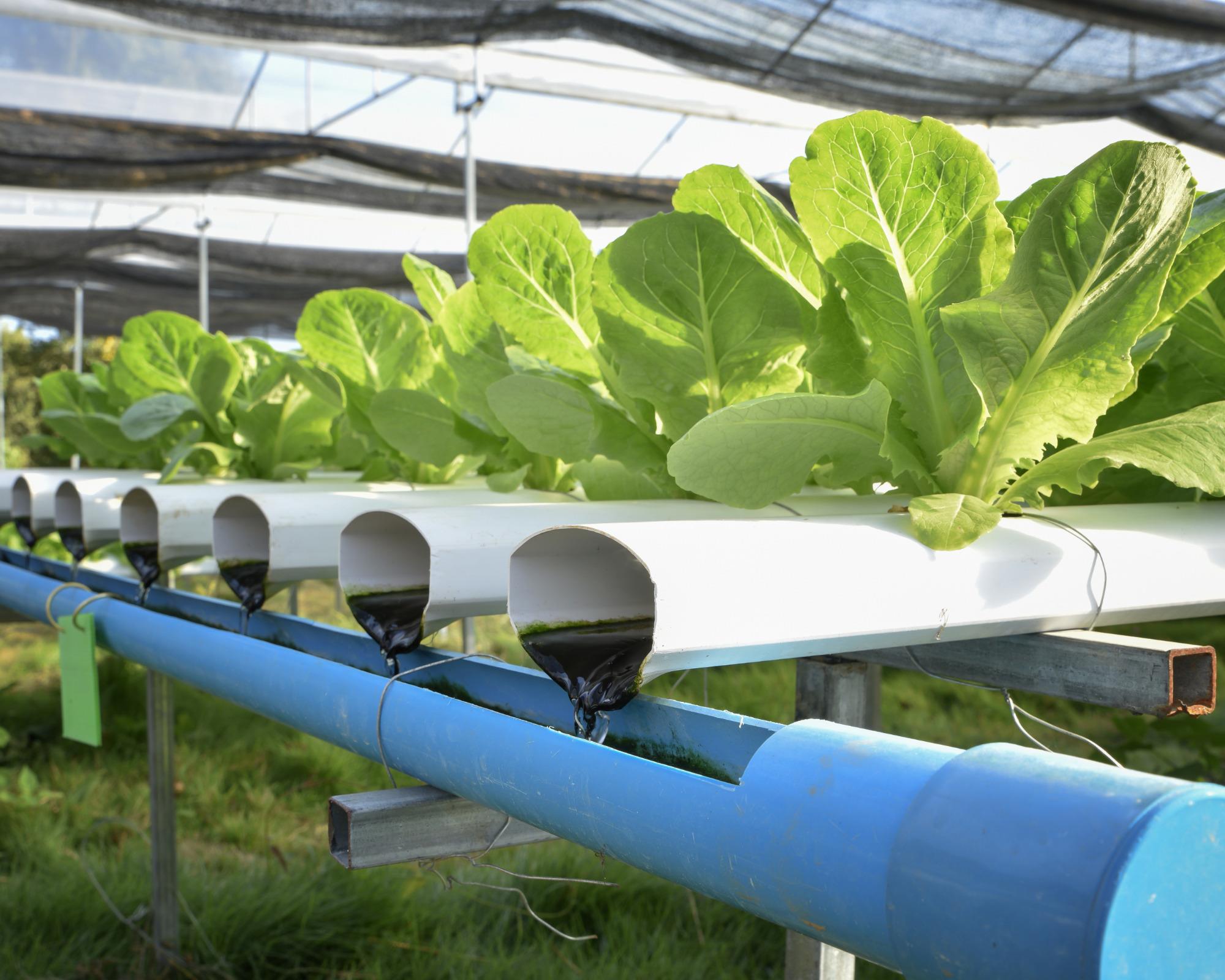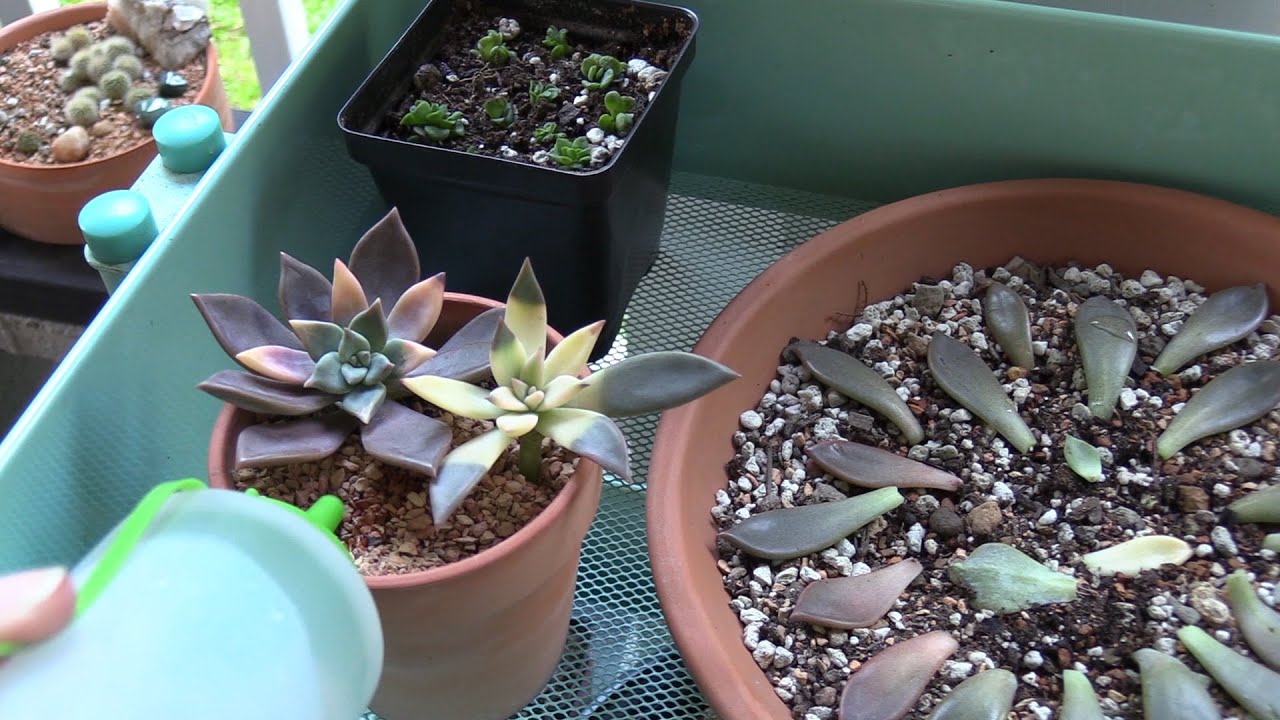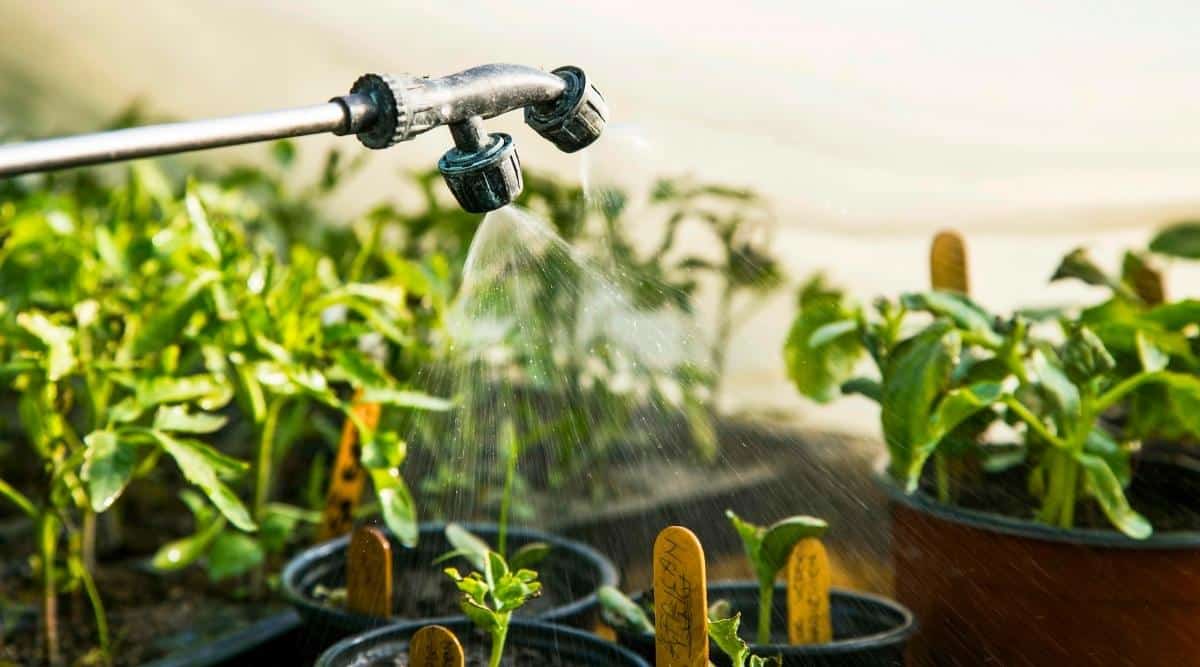Home>Gardening Techniques>Plant Care>Aeroponics: How Much Water


Plant Care
Aeroponics: How Much Water
Modified: January 22, 2024
Discover the water-saving benefits of aeroponics for plant care. Learn how this innovative method reduces water usage and promotes healthy plant growth.
(Many of the links in this article redirect to a specific reviewed product. Your purchase of these products through affiliate links helps to generate commission for Chicagolandgardening.com, at no extra cost. Learn more)
Table of Contents
What is Aeroponics?
Aeroponics is a cutting-edge method of growing plants that has gained significant attention in recent years due to its efficiency and sustainability. Unlike traditional soil-based or hydroponic cultivation, aeroponics involves suspending plant roots in a misty, oxygen-rich environment. This innovative approach not only nurtures plant growth but also conserves water and nutrients, making it an attractive option for modern agriculture and indoor gardening.
Aeroponics harnesses the power of air and water to create an optimal environment for plant roots, allowing them to thrive without the need for soil. By delivering a nutrient-rich mist directly to the roots, aeroponic systems promote rapid and robust growth, resulting in healthier plants and higher yields. This method has been embraced by commercial growers, urban farmers, and home gardeners seeking a sustainable and space-efficient way to cultivate a wide variety of crops.
As the world faces increasing challenges related to water scarcity and environmental sustainability, aeroponics offers a promising solution for producing food and ornamental plants with minimal water usage and waste. By understanding the principles of aeroponic cultivation and its benefits, individuals can make informed decisions about incorporating this innovative technique into their gardening practices.
What is Aeroponics?
Aeroponics is a cutting-edge method of growing plants that has gained significant attention in recent years due to its efficiency and sustainability. Unlike traditional soil-based or hydroponic cultivation, aeroponics involves suspending plant roots in a misty, oxygen-rich environment. This innovative approach not only nurtures plant growth but also conserves water and nutrients, making it an attractive option for modern agriculture and indoor gardening.
Aeroponics harnesses the power of air and water to create an optimal environment for plant roots, allowing them to thrive without the need for soil. By delivering a nutrient-rich mist directly to the roots, aeroponic systems promote rapid and robust growth, resulting in healthier plants and higher yields. This method has been embraced by commercial growers, urban farmers, and home gardeners seeking a sustainable and space-efficient way to cultivate a wide variety of crops.
As the world faces increasing challenges related to water scarcity and environmental sustainability, aeroponics offers a promising solution for producing food and ornamental plants with minimal water usage and waste. By understanding the principles of aeroponic cultivation and its benefits, individuals can make informed decisions about incorporating this innovative technique into their gardening practices.
Benefits of Aeroponics
Aeroponics offers a multitude of benefits that make it an attractive option for modern plant cultivation. Some of the key advantages of aeroponic systems include:
- Water Efficiency: Aeroponics uses up to 95% less water than traditional soil-based agriculture, making it an exceptionally efficient method of plant cultivation. By delivering nutrients directly to the roots in the form of a mist, aeroponic systems minimize water waste and promote sustainable water usage.
- Optimal Nutrient Absorption: The misting mechanism in aeroponics ensures that plant roots receive an optimal balance of nutrients, promoting robust growth and maximizing nutrient absorption. This targeted delivery system leads to healthier plants and higher crop yields.
- Rapid Plant Growth: Aeroponic cultivation encourages accelerated plant growth due to the direct access to oxygen, nutrients, and water. This results in faster crop cycles and increased productivity, making it an appealing choice for commercial growers and urban farmers.
- Space Efficiency: Aeroponic systems are highly space-efficient, making them ideal for urban agriculture and indoor gardening. By eliminating the need for soil, plants can be grown vertically or in compact settings, maximizing the use of available space.
- Reduced Environmental Impact: The water-saving nature of aeroponics, coupled with its efficient nutrient delivery, contributes to a reduced environmental impact compared to traditional farming methods. This makes aeroponics a sustainable choice for environmentally conscious growers.
- Pest and Disease Management: The soilless nature of aeroponic systems minimizes the risk of soil-borne pests and diseases, reducing the need for chemical pesticides and promoting healthier, more natural plant growth.
These benefits collectively position aeroponics as a highly efficient and sustainable method of plant cultivation, offering solutions to key challenges faced by traditional agriculture while supporting the production of healthy, high-quality crops.
Water Usage in Aeroponics
Aeroponics represents a groundbreaking approach to water usage in plant cultivation, offering unparalleled efficiency and sustainability. Unlike traditional farming methods, which often require substantial volumes of water for irrigation, aeroponic systems are designed to optimize water usage through targeted nutrient delivery and minimal waste. The following factors contribute to the efficient water usage in aeroponics:
- Precise Nutrient Delivery: In aeroponic systems, water is utilized with precision to deliver nutrients directly to the plant roots in the form of a fine mist. This targeted approach ensures that water is used exclusively for the nourishment of the plants, minimizing waste and maximizing efficiency.
- Recirculation Systems: Many aeroponic setups incorporate recirculation mechanisms, allowing excess water and nutrients to be collected and reused. This closed-loop system further reduces water consumption, making aeroponics an exceptionally sustainable method of cultivation.
- Minimal Evaporation and Runoff: The misting process in aeroponics minimizes evaporation, ensuring that water is efficiently utilized without unnecessary loss. Additionally, the absence of soil eliminates runoff, preventing water and nutrients from being wasted or leaching into the surrounding environment.
- Customizable Water Management: Aeroponic systems enable precise control over water usage, allowing growers to tailor the misting frequency and duration based on the specific needs of different plant species. This customization ensures that water is utilized optimally for each crop, further enhancing efficiency.
- Adaptability to Water-Scarce Environments: The exceptional water efficiency of aeroponics makes it well-suited for cultivation in water-scarce regions, offering a sustainable solution for agricultural production in areas facing water shortages or drought conditions.
By leveraging these water-saving mechanisms, aeroponics stands as a pioneering method that not only conserves water but also promotes the sustainable use of this precious resource in plant cultivation. As global concerns regarding water scarcity continue to escalate, the water-efficient nature of aeroponics holds immense promise for addressing these critical challenges in agriculture.
Factors Affecting Water Usage in Aeroponics
Several key factors influence water usage in aeroponic systems, playing a crucial role in determining the efficiency and sustainability of this innovative method of plant cultivation. Understanding these factors is essential for optimizing water usage and maximizing the benefits of aeroponics. Some of the primary elements that impact water usage in aeroponics include:
- Nutrient Solution Composition: The formulation of the nutrient solution used in aeroponic systems directly affects water usage. By carefully balancing the concentration of nutrients and adjusting the solution’s pH levels, growers can ensure that water is effectively utilized for delivering essential nutrients to the plants.
- Misting Frequency and Duration: The frequency and duration of misting cycles significantly influence water usage in aeroponics. By tailoring these parameters to suit the specific needs of different plant species and growth stages, growers can optimize water usage while promoting healthy plant development.
- Environmental Conditions: Ambient temperature, humidity levels, and airflow within the aeroponic environment impact water usage. Proper environmental control is essential for minimizing water loss through evaporation and ensuring efficient nutrient delivery to the plant roots.
- Plant Growth Stage: The water requirements of plants vary throughout their growth cycle. Adjusting misting patterns and nutrient delivery based on the specific needs of seedlings, vegetative growth, and flowering stages can help conserve water while supporting optimal plant development.
- Root Health and Development: The health and growth of plant roots directly influence their ability to absorb water and nutrients. Maintaining optimal root conditions through proper aeration and nutrient delivery is essential for maximizing water usage efficiency in aeroponic cultivation.
- System Design and Technology: The design and technological features of aeroponic setups, including misting mechanisms, recirculation systems, and control interfaces, play a pivotal role in regulating water usage. Well-designed systems with efficient water management capabilities can significantly enhance water conservation in aeroponics.
By carefully considering and managing these factors, growers can fine-tune their aeroponic systems to minimize water usage while fostering robust plant growth. This proactive approach not only promotes sustainability but also ensures the optimal utilization of water resources in aeroponic cultivation.
Strategies for Efficient Water Usage in Aeroponics
Implementing effective strategies for water usage is essential to maximize the efficiency and sustainability of aeroponic systems. By adopting specific approaches and techniques, growers can optimize water utilization while promoting healthy plant growth. The following strategies are instrumental in achieving efficient water usage in aeroponics:
- Precise Nutrient Delivery: Fine-tuning the composition of the nutrient solution and the misting schedule is crucial for delivering the right amount of water and nutrients to the plant roots. By ensuring precise nutrient delivery, growers can minimize water waste and support optimal plant development.
- Environmental Monitoring and Control: Regular monitoring of environmental factors such as temperature, humidity, and airflow enables growers to create an optimal growing environment. Maintaining suitable conditions minimizes water loss through evaporation and ensures efficient nutrient absorption by the plants.
- Root Zone Management: Monitoring the health and development of plant roots is essential for efficient water usage. Proper aeration of the root zone and regular inspection of root health contribute to maximizing water absorption and minimizing wastage.
- Customized Misting Cycles: Tailoring misting frequency and duration to correspond with the specific water requirements of different plant species and growth stages is critical. Customized misting cycles ensure that water is utilized efficiently, supporting healthy plant growth without unnecessary waste.
- Recirculation and Water Recovery: Implementing recirculation systems allows excess water and nutrients to be collected and reused, minimizing overall water consumption. This sustainable approach reduces water waste and promotes responsible water usage in aeroponic cultivation.
- Technology Integration: Leveraging advanced aeroponic technologies and automation systems can enhance water management capabilities. Automated controls for nutrient delivery and misting cycles enable precise water usage, contributing to overall efficiency and sustainability.
By integrating these strategies into their aeroponic practices, growers can significantly enhance water usage efficiency while maintaining optimal growing conditions for their plants. These proactive approaches not only support sustainable water management but also contribute to the overall success of aeroponic cultivation.
Conclusion
Aeroponics represents a revolutionary approach to plant cultivation that offers unparalleled water usage efficiency and sustainability. By harnessing the power of air and water, aeroponic systems deliver precise nutrient solutions to plant roots, promoting rapid growth and high yields while conserving water resources. The numerous benefits of aeroponics, including water efficiency, optimal nutrient absorption, rapid plant growth, space efficiency, reduced environmental impact, and pest and disease management, underscore its potential to address critical challenges in modern agriculture.
Factors such as nutrient solution composition, misting frequency, environmental conditions, and root health play pivotal roles in determining water usage efficiency in aeroponics. By carefully managing these factors and implementing targeted strategies, growers can optimize water utilization, minimize waste, and support the sustainable production of healthy, high-quality crops. The integration of advanced technologies and automation further enhances water management capabilities, contributing to the overall success of aeroponic cultivation.
As the global population continues to grow, and concerns regarding water scarcity and environmental sustainability intensify, the adoption of innovative methods like aeroponics becomes increasingly imperative. By embracing the principles of aeroponic cultivation and prioritizing efficient water usage, individuals and communities can contribute to a more sustainable and resilient agricultural future. The remarkable potential of aeroponics to revolutionize water usage in plant cultivation underscores its significance as a pioneering solution for meeting the demands of a rapidly evolving world.





